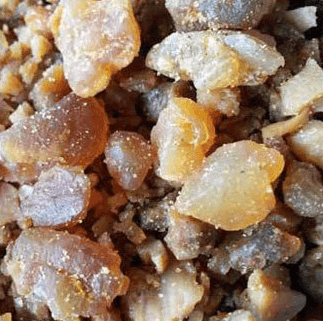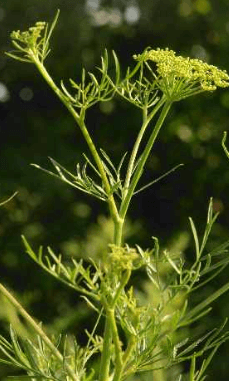Hing (Asafoetida)
The herb Asafetida or Hing, is characterized with a typical and irrepressible odour, it is also named as Narthex or Devil’s dung. The Latin name being Ferula foetida, it also belongs to the family Umbelliferae.
The fragrant, perennial herb of asafetida is about 5 to 8 feet high, bearing small yellow coloured flowers. The root is thick and branched. Hing is the oily gum resin collected from the roots. For this purpose, the herb that is approximately five years old is scrapped and an incision is made in the upper part of the taproot. The exudates is thus collected and the entire process is repeated a number of times. This gum resin gets hardened with passage of time.
There are generally tow varieties of Hing. Of thses, one is yellowich brown, contains a peculiar, strong and persistant fragrance and is in the shape of alum. This is considered as the better one. The second type is blackish in colour and possesses an unpleasant odour. This is low in properties.
To discover the genuine hing the following tests can be done. When you heat a piece of hing on direct fire, it should burn off entirely. A second method of detecting the purity of hing is to mix it in water. On mixing, the  hing should dissolve slowly in the form of white streaks making the water opaque, milk like, and during the process no residue matter should remain.
hing should dissolve slowly in the form of white streaks making the water opaque, milk like, and during the process no residue matter should remain.
Chemically, asafetida contains resin 40 to 64 % gum 25 % volatile oil 10 to 17% and ash 1.5 to 10%. Furthermore. There is presence of Asaresinotannol, Ferulic acid and Disulphide as prime components. Of these, disulphide causes the peculiar. Fragrance present in asafetida.
Properties
Hing is believed to be light, slimy and robust in nature. Both the taste as well as after taste are bitter , and it is hot in potency thus asafetida comes to use in treating the disorders in which there is aggravation of air and phlegm body humors or when the fire inside the body system remains decreased. A number of Ayurvedic formulations like Hingvashtak churan, Hingvaadi vatti etc are generally prescribed by the physician. The properties include being a stimulant, expectorant, carminative and antispasmodic. The dosage is approximately 125 to 500 mg. other than this according to Ayurvedic texts, the specific actions of than this, according to Ayurvedic texts, the specific actions of asafetida are summarized by the following terms : Ruchya –that what causes longing for food, Deepana that what invigorates the gastric fire for digestion of food, pachhan that it is digestive, Anuloman as it subsides the excessive wind, Shoolprashmana. That what combats pain, Krimighana act as a wormicide and Hridya. It is beneficial for the heart. Furthermore , asafetida is also a mild sedative an aids in lowering blood pressure.
Uses
External application of asafetida on the umbilicus in case of abdominal discomfort caused by flatulence is of great help in infants and small children. Similarly in respiratory disorders like bronchitis, cough and cold the local massage on the chest helps.
In case of intestinal parasites, asafetida diluted in water is given as an enema. The smoke that results from brining hing can be inhaled so as to get relief from spasms of bronchial asthma
The benefits of Asafoetida have been also emphasized in the metabolic as well as nervous disorders. For example in paralysis, sciatica, lockjaw or insomnia.
You can benefit immensely by using asafetida either in the form of a condiment at home or as a remedy to fight various disorder. Yet, it is required to be used with caution in you are a possessor of hot temperament or even in hot climate conditions.
